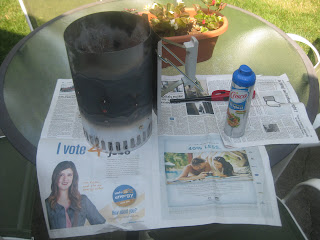Jim was reasonably receptive to the idea of working together, and contributed several ideas. The Common/Uncommon/Rare system was just being applied to magic items at the time I originally contacted him, and he suggested that we might also want to come up with several Common magic item enchantments that could be applied to the implements we developed. He also did a lot of work on the story development in the article (below). In fact, it's probably fair to say that Jim did all of the flavor text in the article along with helping polish the mechanics.
Along with a lot of notes about proposed mechanics, the original pitch I sent Jim for some review read as follows:
This crunch-heavy article would expand on the superior implements currently available by both defining two new superior implement keywords and presenting roughly a dozen new superior implements of all types that both take advantage of the new keywords defined and present new combinations of implements and keywords. Our best estimate of the word count is approximately 1500 words.
Jim rewrote the pitch, based on the following general principles:
- Don't come in too high. It's easier to come in low and have them ask for more, or (in an article like this) write more than you originally pitched and ask them to pick the best of the selection.
- At the time, the magic item rarity rules had just been introduced, and there was a massive gap in what items were considered to be Common. Adding the magic items was a way to help make the article appeal to more possible players.
- At the time, the Grifnar's Arms article was only a couple months old, and was one of the best-received short articles in a long time. So, it was an attempt to link the article we were proposing to something else that was recently well-liked. In addition, the word count was boosted to match the length of Grifnar's Arms article, which had lacked any new rules content.
Bazaar of the Bizarre: Tools of the Spellcaster’s Trade
This article would present new superior implements for the discerning spellcaster. It would be in a style similar to the Bazaar of the Bizarre article "Grifnar's Arms" from Dragon 391, introducing Grifnar's elven counterpart, Aldanian. Aldanian would offer several kinds of superior implements as well as some more common magic items.
At the time, Wizards of the Coast didn't guarantee a response to every pitch submitted, and we went our requisite 60 days without hearing anything. We did both think the general idea still had legs, and ended up sending a query (pitch) to Wolfgang Bauer of Kobold Press for possible use in Kobold Quarterly magazine. He liked the general idea enough to let us write up a full manuscript (PDF version here), and sent us some notes about the Midgard campaign setting (used by KQ for a number of their articles). Wolfgang also ended up passing on buying the full article, which we figured out from seeing the tables of contents for the two issues of KQ we might have been considered for & learning that manuscripts didn't remain in the submissions pile from one issue to the next.We intend to define two new superior implement keywords (enduring, to help spellcasters that summon creatures, and expansive, to help spellcasters who favor area effect spells) and present roughly a half-dozen new superior implements for all implement-using classes. We would also provide two or three common magic item enchantments that could be used with multiple types of implements. We estimate this article will be approximately 2000 words. This article is being jointly submitted by Jim Auwaerter and Jeff Dougan.
Some time in here, the second period in which Wizards of the Coast guaranteed responses to everybody opened up. I got a hold of Jim again and asked him if he felt like it was worth giving it one more go, since this time we'd get some guaranteed feedback. I sent it in along with a few other pitches (it ended up in my second batch of pitches in that window), and waited. For reasons unknown to me, feedback on this particular pitch was missed in the initial pass. However, I ended up following up on its status at the same time as the project that they eventually did pick up, and learned the following reasons for its rejection:
- At the time we sent this, they had a number of Bazaar of the Bizarre articles (the series under which this would have appeared) in various stages of work, so they didn't want to add more to that series.
- The mechanics we'd proposed were functional, but the design team didn't want to add more keywords or other new mechanics unless they addressed something vitally needed. There were also some concerns about our new introductions adding an element of "power creep" into the game.




